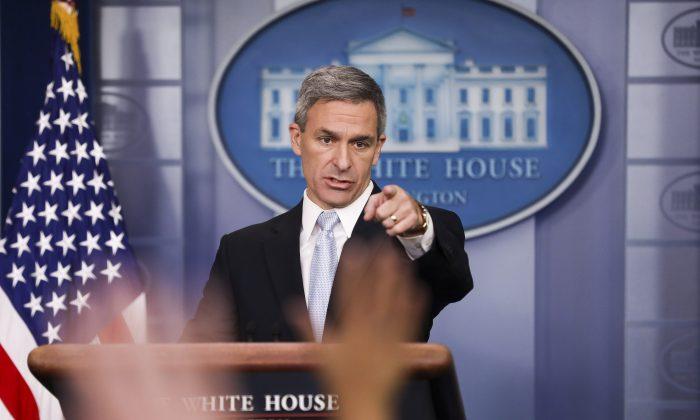The 837-page plan applies to applications filed after Oct. 15 this year and is expected to affect approximately 400,000 annual applications.
The rule means a services officer reviewing an application will look at the applicant’s history of using welfare, such as food stamps, public housing assistance, and Medicaid.

“It will also have the long-term benefit of protecting taxpayers by ensuring people who are immigrating to this country don’t become public burdens, that they can stand on their own two feet, as immigrants in years past have done,” he added. “It’s not only a recipe for their success, but for America’s success growing out of our immigration system.”
The rule shifts guidance from 1999, which advised immigration officials not to take reliance on public benefits into consideration when evaluating applications.
“The difficulty we have had for the last 20 years under the 1999 guidance is that it was in anticipation of a rule that was never entered and it was fairly minimalist guidance and it has not been particularly useful in the work we do at USCIS,” Cuccinelli said, calling the new rule a “better and more thorough attempt.”
“There isn’t a formula,” he said. “It is intended to be a case-by-case determination.”
If someone is denied a green card, they are not deported but stay at the immigration status they were.
Some immigration rights activists criticized the new rule, claiming it’s anti-immigrant.
“The Trump administration’s so-called ‘public charge rule’ is a flimsy pretext to close America’s door to middle and working-class immigrants,” David Leopold, a prominent immigration lawyer, told the Times. “Simply put, there’s no problem to be fixed.”

63 Percent of Non-Citizen Households Use Welfare
A report late last year said that 63 percent of non-citizen households use welfare programs, compared to 35 percent of citizen households.“In 2014, 63 percent of households headed by a non-citizen reported that they used at least one welfare program, compared to 35 percent of native-headed households,” the center stated.
“Welfare use drops to 58 percent for non-citizen households and 30 percent for native households if cash payments from the Earned Income Tax Credit (EITC) are not counted as welfare. EITC recipients pay no federal income tax. Like other welfare, the EITC is a means-tested, anti-poverty program, but unlike other programs one has to work to receive it. Compared to native households, non-citizen households have much higher use of food programs (45 percent vs. 21 percent for natives) and Medicaid (50 percent vs. 23 percent for natives).”
“Including the EITC, 31 percent of non-citizen-headed households receive cash welfare, compared to 19 percent of native households. If the EITC is not included, then cash receipt by non-citizen households is slightly lower than natives (6 percent vs. 8 percent),” it added.





